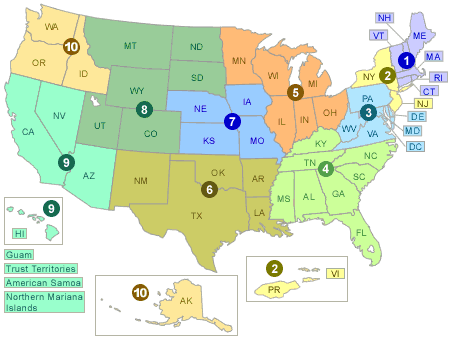Lead Poisoning Prevention Grants
EPA awards grants through its competitive grant programs aimed at promoting efforts to prevent or reduce childhood lead poisoning.
- EPA's National Community-Based Lead Grant Program
- EPA's Targeted Lead Grant Program
- Tribal Lead Grant Program
In 2008, EPA awarded 17 grants as part of three competitive grant programs aimed at promoting efforts to prevent or reduce childhood lead poisoning.

The National Community-Based Lead Grant Program is aimed at promoting efforts to prevent or reduce childhood lead poisoning. In 2008 the Agency awarded more than $2.4 million in grant dollars. The funds enable communities to educate those at risk, provide lead-awareness training and develop local ordinances aimed at lead abatement. Grant recipients range from tribes, city health departments, universities and colleges, community organizations, and other non-profit organizations.
EPA's 2007 Targeted Lead Grant Program funded projects in areas with high incidences of children with elevated blood-lead levels in vulnerable populations. In 2007 the Agency awarded more than $5.2 million in grant dollars. These targeted grants address immediate needs of the communities in which they are awarded, and also highlight lead poisoning prevention strategies that can be used in similar communities across the country.
2009 Tribal Grants. EPA's tribal grant program funds efforts to reduce the incidence of childhood lead poisoning in tribal communities. EPA is making available approximately $500,000 for Tribal Lead Grants. EPA is accepting grant proposals from federally-recognized Indian tribes and tribal consortia to support tribal educational outreach and to conduct a baseline assessment of tribal children's existing and potential exposure to lead-based paint and related lead-based paint hazards. In the Request for Proposals (PDF) (24 pp, 140KB) EPA describes activities eligible for funding include educational outreach, data gathering, inspections, risk assessments, training and development of new and innovative approaches to identifying or reducing lead poisoning. The closing date for applicants to submit proposals under this announcement is April 30, 2008. Applicants can submit proposals via mail or by regular mail. See the 2008 grant recipients.
2008 National Community Based Lead Grants. EPA solicited grant proposals from eligible entities to reduce incidences of childhood lead poisoning in low-income communities with older housing. In the Request for Proposals (PDF) (19 pp, 94K), EPA described a new community-based lead grant program and provided potential grant activities that include outreach, training, ordinance development, and other activities that result in reduction of childhood lead poisoning. The closing date for applicants to submit proposals under this announcement was March 31, 2008.
EPA's lead program is playing a major role in meeting the federal goal of eliminating childhood lead poisoning as a major public health concern by 2010. Projects supported by these grant funds are an important part of this ongoing effort – and we are seeing their effects. By 2002, the number of U.S. children with elevated blood-leadlevels dropped to 310,000 from 13.5 million in 1978, according to the Centers for Disease Control and Prevention.
Read more information about EPA's Lead Program, or call the National Lead Information Center at 1-800-424-LEAD.
2007/2008 National Community-Based Lead Grant Program
The following is a list of national grants listed by state. National Community-Based Lead Grants are designated as such.
Region 1
- Connecticut, Maine, Massachusetts, New Hampshire, Rhode Island, Vermont|
Connecticut
Massachusetts
Rhode Island
|
Region 2
- New Jersey, New York, Puerto Rico, U.S. Virgin Islands New York
|
Region 3
- Delaware, District of Columbia, Maryland, Pennsylvania, Virginia, West Virginia|
Delaware
District of Columbia
Maryland
Pennsylvania
|
Region 4
- Alabama, Florida, Georgia, Kentucky, Mississippi, North Carolina, South Carolina, TennesseeRegion 5
- Illinois, Indiana, Michigan, Minnesota, Ohio, WisconsinRegion 6
- Arkansas, Louisiana, New Mexico, Oklahoma, Texas|
Arkansas
New Mexico
Oklahoma
Texas
|
Region 7
- Iowa, Kansas, Missouri, NebraskaRegion 8
- Colorado, Montana, North Dakota, South Dakota, Utah, Wyoming|
Colorado
Montana
Wyoming
|
Region 9
- Arizona, California, Hawaii, Nevada, Territories of Guam and American SamoaRegion 10
- Alaska, Idaho, Oregon, Washington|
Oregon
Washington
|
![[logo] US EPA](https://webarchive.library.unt.edu/eot2008/20090510094749im_/http://www.epa.gov/epafiles/images/logo_epaseal.gif)